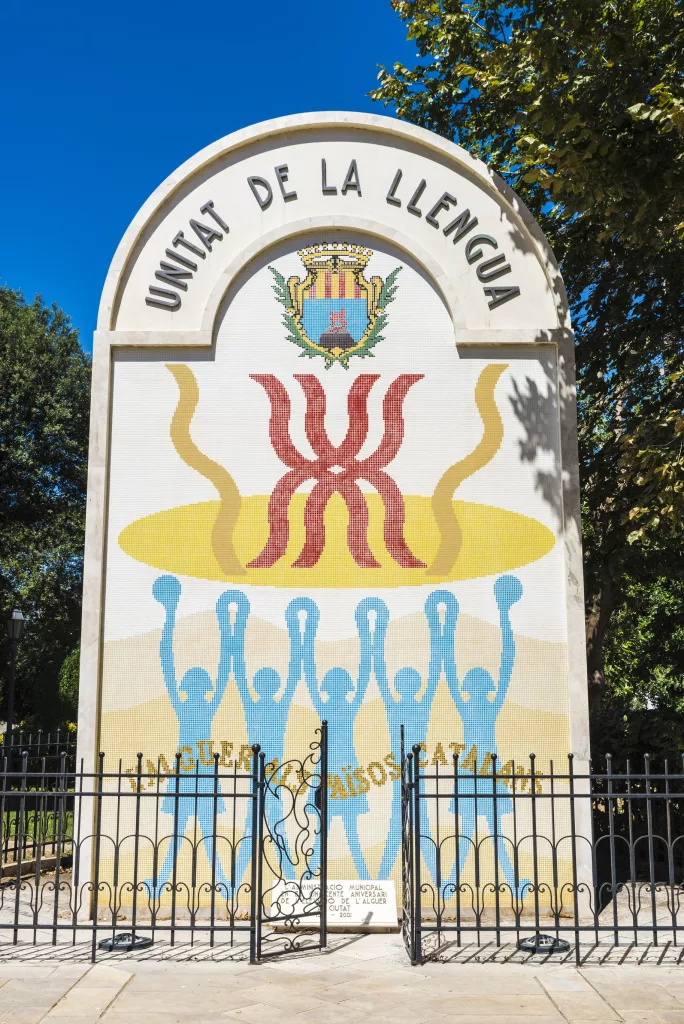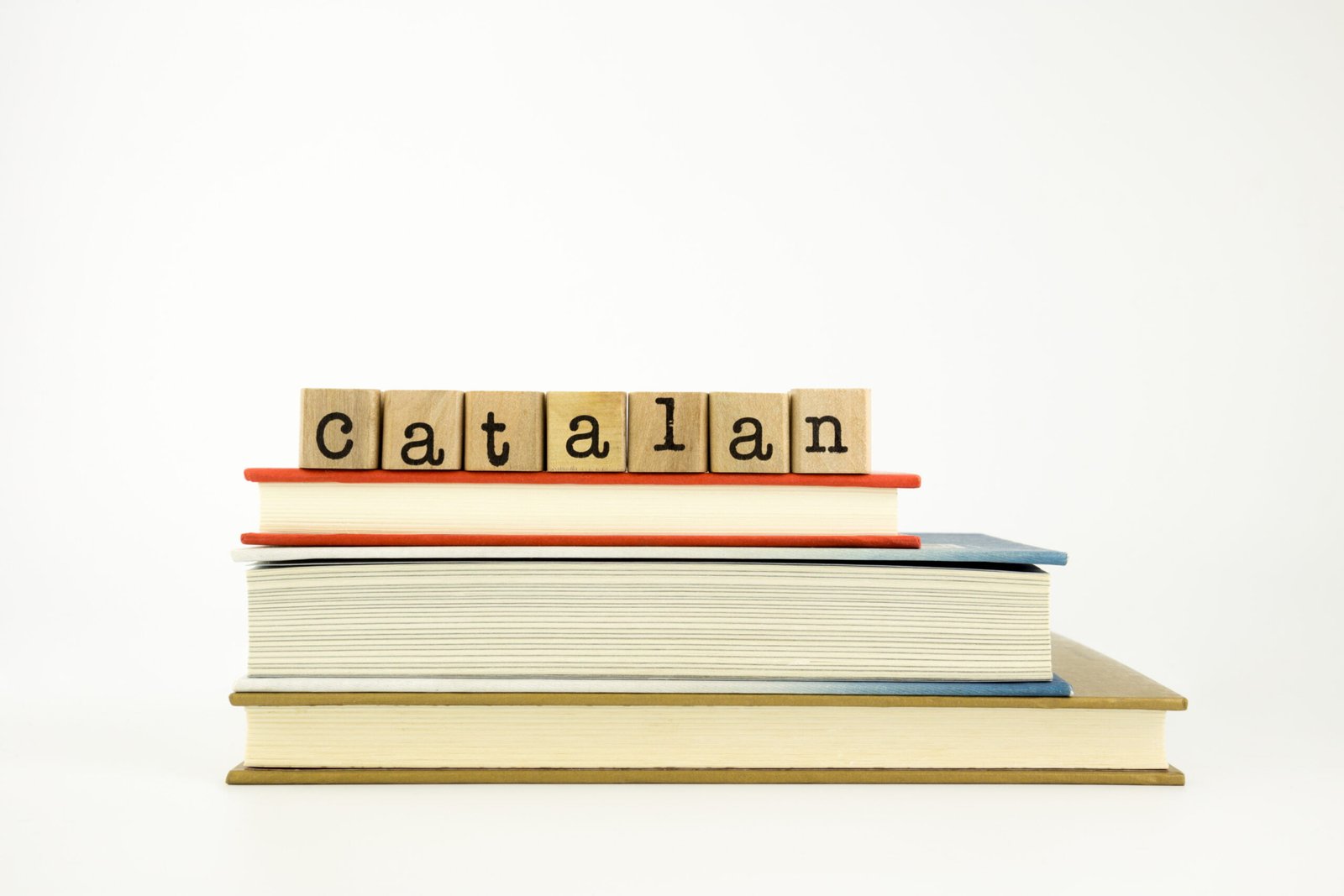Catalan is a beautiful language spoken by over nine million people in Western Europe and around the world. With a rich literary tradition and fascinating linguistic history, it’s unfortunate how many myths abound about the language. These 10 represent some of the most prevalent, and some of the most inaccurate. It’s time they were debunked.
Myth: Catalan Is Dialect of Spanish
Truth: Catalan is not any more a dialect of Spanish than other Romance languages like French and Italian are. All Romance languages evolved from Vulgar Latin, most becoming their own languages during the Middle Ages.
In fact, Catalan differentiated from Vulgar Latin in the area around Catalonia between the Eighth and 10th Centuries with written documents appearing in the 11th Century. Meanwhile, Spanish and Portuguese did not separate from each other until well into the 12th Century. This is why those two languages are grouped together in the “West Iberian Romance” language family while Catalan is an entirely different family: Occitan Romance.
Yet no one considers Portguguese to be a dialect of Spanish. Why? They aren’t mutually intelligible. Spanish speakers cannot understand Portuguese speakers, nor can they understand Catalan speakers. All three are separate languages.

Myth: Few People Speak Catalan
Truth: Catalan is the native first language of over four million people and a second language for five million more, for a total of over nine million. Even just counting the native speakers, that means more people speak Catalan than many national languages such as Lithuanian and Slovenian.
Additionally, Catalan occupies a wide geographical area covering four countries: Spain, France, Italy and Andorra. This is on top of the many Catalan-speaking immigrants and communities around the world.

Myth: Catalan Is a Mixture of Spanish and French
Truth: Catalan is a language with its own separate standing just like Spanish and French.
Many people attempt to explain Catalan to newcomers by describing it as a mixture of French and Spanish, languages that currently border the Catalan countries. Taken at face value, this explanation seems to suggest Catalan is a French-Spanish creole, which is simply not true. Catalan evolved on its own from Vulgar Latin with its first distinguishable written documents appearing in the 11th Century. The first written documents in Spanish date to around the same time, and in French, the 9th Century.
It’s also important to note that French and Spanish did not border Catalan at their respective inceptions. Catalan evolved in the eastern Pyrenees near Andorra while Spanish evolved in northern Spain before being standardized in Toledo. French is from northern France around Paris. The two languages only came to border the Catalan-speaking region after centuries of expansion. Spain pushed out Aragonese on Catalan’s western flank by the end of the 15th Century, and French replaced Occitan to the north of Catalonia around the same time.
However, linguistic history and classification aside, Catalan is simply not as similar to French and Spanish as it is to other Romance languages. Catalan shares its highest lexical similarity coefficient with Italian at 0.87. Its coefficients with French and Spanish are both 0.85, no more than its similarity to Portuguese. Meanwhile Spanish shares a 0.89 similiarity with Portuguese.

Myth: Mallorcan and Valencian Are Different Languages
Truth: Mallorcan and Valencian are dialects of Catalan. For various political reasons, groups and ideologues attempt to classify these dialects as separate languages, such as Mallorcan (mallorquí) and Valencian (valencià). In fact, The Valencian Community’s Statute of Autonomy refers to the language as Valencian.
However, what defines a language is mutual intelligibility. While people in Catalonia, Valencia, Mallorca and even Alghero may speak with different accents and words, a Catalonian can go to Mallorca and be understood. A Mallorcan can go to Valencia and be understood. Meanwhile, a Mallorcan cannot go to Madrid, Paris or London and be understood.
Myth: Catalan Is Not Officially Recognized
Truth: Catalan is the official language of an entire country: Andorra. There it is the language of instruction in schools and government institutions, and laws are written in Catalan. Many people try to discount Catalan or portray it as inferior to “official” languages, and while this is irrelevant anyway, it’s also just not true.
In addition to Andorra, Catalan is official in many subnational politically defined regions. These include Catalonia and the Balearic Islands in Spain and Alghero in Italy. Though referred to as “Valencian” legally, it’s also official in Valencia, Spain.
Get $10 in iTalki credits when you book your first lesson.

Myth: Catalan Is a Political Invention
Truth: Catalan evolved organically from Vulgar Latin in the Middle Ages just like all Romance languages. The Romans spread Latin throughout their empire, and after its collapse, Vulgar Latin diverged on a dialectical continuum with people speaking increasingly differently with increasing geographical separation.
Catalan became recognizable as a separate linguistic branch before the 10th Century, and then it was spread by the Crown of Aragon throughout the Medieval Period. Aragon united with Castille when Queen Isabella married King Ferdinand in 1469, putting Catalan and Spanish under the same political domain. This far predates the language’s use as a political symbol, which occurred in the Spanish Civil War when Catalonia was a Republican stronghold, and the Second Spanish Republic made it an official language and lifted restrictions that had been placed on it by the Bourbon monarchy following the War of Spanish Succession.

Myth: Catalan Is Only an Informal Spoken Language
Truth: Written Catalan was standardized in the early 20th Century following a literary revival in the 19th Century in opposition to Bourbon restrictions on it. Indeed, Catalan has a rich literary history dating back to its inception. The first literary text is known as Homilies d’Organyà written in the late 11th Century. Another important Catalan classic is Tirant lo Blanch, a romance published by Joanot Martorell in 1490 that greatly influenced the course of Western literature.
Catalan’s literary tradition is currently preserved and promoted by the Institut Ramon Llull, named after a 13th-Century writer from Mallorca who authored the famous novels Blanquerna and Abre de la ciència. Important modern writers of Catalan include:
- Mercè Rodoreda
- Albert Espinosa
- Eduardo Mendoza
- Caterina Albert
- Manuel Vázquez
On top of its rich literary tradition, Catalan is also the language of instruction in schools throughout its range and the preferred method of written communication for many businesses and organizations.
Myth: People Who Speak in Catalan Are Being Rude
Truth: Catalan speakers insist on Catalan as a means of preserving the language and culture.
In many Catalan Countries, people will refuse to speak the more dominant national language with you, even if you both know it, be it Spanish, French or Italian. At first this may seem rude. After all, if you both know Spanish, wouldn’t that facilitate communication and make things easier?
However, these people are not being rude. In fact, they rarely have any animosity towards you or the dominant language. Instead, this is a deliberate collective movement that’s necessary to preserve minority languages that are overshadowed by larger national languages.
This is because speakers of minority languages like Catalan often do know the dominant languages as second languages since it’s necessary to navigate national systems and insitutions. As a result, a phenomenon occurs where even if a group of 10 people consists of nine Catalan speakers and one Spanish speaker, the entire group will speak Spanish because they all know it.
In other words, there is more systemic pressure on Catalan speakers to learn the dominant language than the other way around. The only way to preserve their language in the face of this is with a coscious effort to equalize that pressure and insist on Catalan even when it may not be necessary.

Myth: You Don’t Need to Learn Catalan to Live in a Catalan Country
Truth: Learning Catalan is not only an ethical duty when living in a Catalan Country, it is the wise choice if you want to expand your economic, educational and social opportunities. While it’s true that the vast majority of Catalan speakers speak a larger language, usually Spanish, you should still respect their culture and history by learning their first language, just as you should learn Swedish when moving to Sweden even though most people speak English.
However, even if you don’t agree with this moral position, it’s in your own best interest to learn Catalan in a Catalan Country. Most of these regions require Catalan certification for jobs in the public sector, Catalan may be the dominant language for navigating government bureaurcracy, and public schools and universities teach in Catalan. Moreover, speaking the locals’ native language gives you a more intimate connection that can facilitate professional and personal relationships you may otherwise miss out on.

Myth: Catalan Is Hard to Learn
Truth: Catalan is a Romance language that is no more difficult for English speakers to learn than Spanish or French, both considered some of the easiest languages for English speakers. In fact, the US Department of State’s Foreign Service Institute classifies languages based on the required amount of time to learn, and places Catalan in Category I, the easiest languages requiring 23-24 weeks or 575-600 class hours.
That said, Catalan does have one major obstacle: the relative lack of resources. For example, while Mallorqueta readers may know I like to promote the Lingoda platform, it’s not an option for learning Catalan because they simply don’t teach it. Even the widely popular platform Duolingo only offers Catalan for Spanish speakers.
While there are plenty of brick-and-mortar language academies teaching Catalan in the Catalan Countries themselves, finding online courses is a bit harder. One excellent—and free—option is parla.cat where you can take self-paced online courses and connect with other learners.
However, if you want personal instruction, my top recommendation is iTalki, which I use for one-on-one tutoring in other languages I’m learning like Chinese and French. It’s one of the few places you’ll find online Catalan tutors, and since they’re based all over the world, you can adapt it flexibly to your schedule.
Get $10 in iTalki credits when you book your first lesson.


